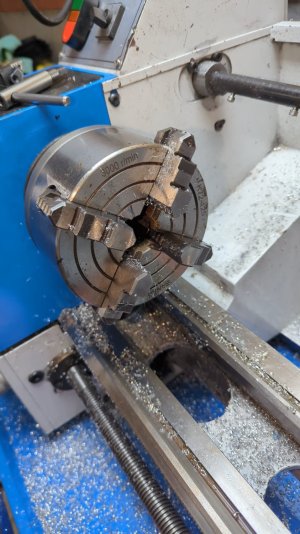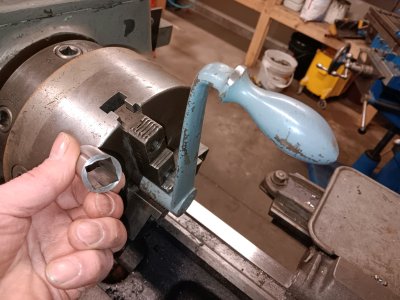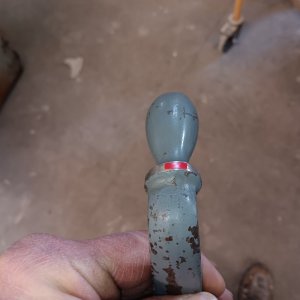yep thats what i did, started at 100rpm with maybe .002-.003 depth of cut, slowest feed and went up a little at a time, untill i reached ~350rpm and upped the feed rate and depth of cut, it didnt move after 4 passes and ive flipped the jaws before going further.Set it up, take a cut or two, (start LIGHT and work up....) and see how it goes. If it works well, great. If it doesn't work WELL, stop and find out why. The best tip I can offer is that if you're doing "off label" stuff, is that if it's not working WELL, it's time to stop and re-evaluate the situation right then. Before it's gone off the rails.
So, with all that cautionary stuff said- It (probably) won't come out with the best finish you've ever made, but I'll bet you can get this done.
One other thought- Does this piece (in the finished product) get any holes in it? If so, that "may" present an opportunity. If there were a hole in the center, that could be pre-made into a smaller threaded hole, you can certainly use threaded rod, with a nut and a washer at the back of the spindle, to hold it in "drawbar style". Or if there's other holes in it elsewhere, the often forgotten faceplate method might present some options. Maybe/maybe not in this case, but thinking through a whole process will very often open up options of that nature, that you can cash in on.
The only holes in it will be on the ends, although i could drill a very shallow hole for a dead center because my cross slide travel is about .090" short of doing the whole thing in one pass. Im a little surprised at how smoothly its cutting, the latest pic i posted was at max feed rate, it will get a finish pass on slow which should give a pretty surface



